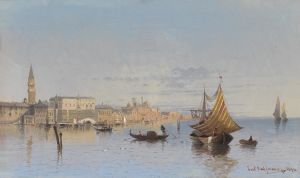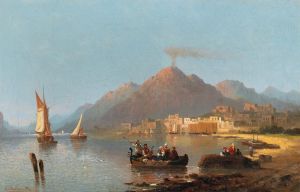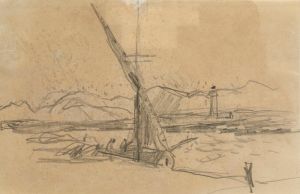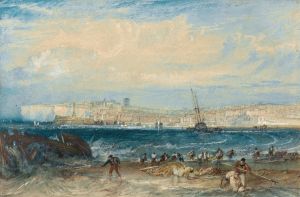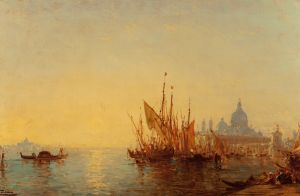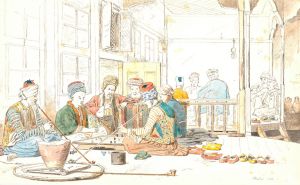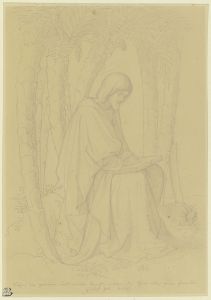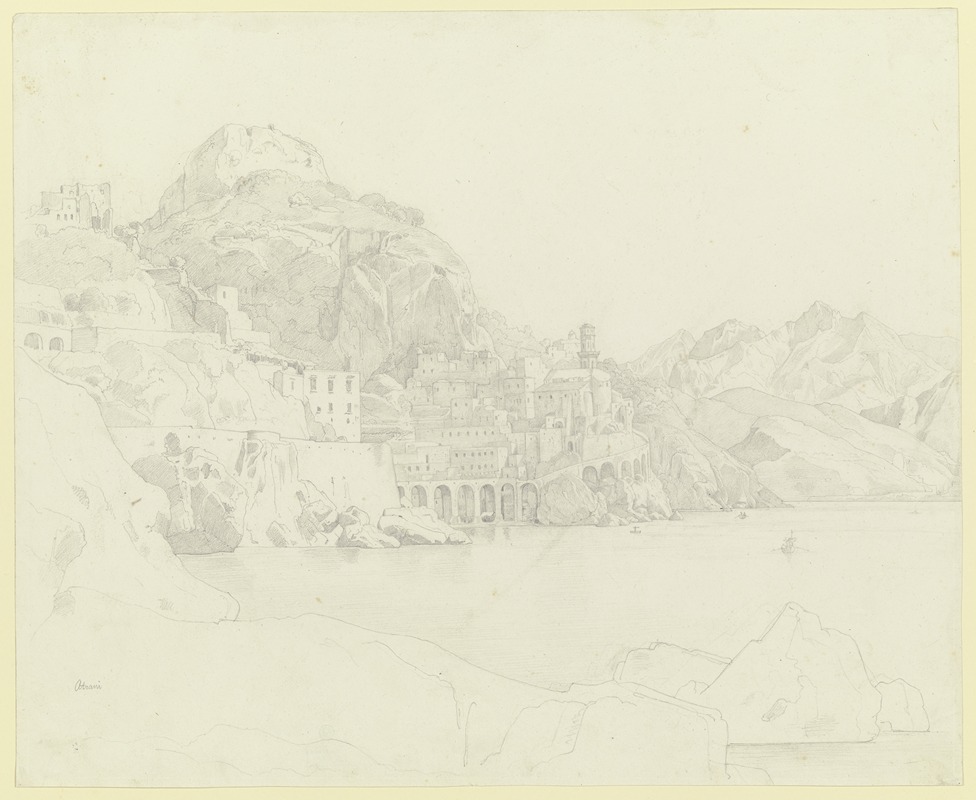
Atrani an der Amalfiküste
A hand-painted replica of Eduard von Steinle’s masterpiece Atrani an der Amalfiküste, meticulously crafted by professional artists to capture the true essence of the original. Each piece is created with museum-quality canvas and rare mineral pigments, carefully painted by experienced artists with delicate brushstrokes and rich, layered colors to perfectly recreate the texture of the original artwork. Unlike machine-printed reproductions, this hand-painted version brings the painting to life, infused with the artist’s emotions and skill in every stroke. Whether for personal collection or home decoration, it instantly elevates the artistic atmosphere of any space.
Eduard von Steinle (1810-1886) was a notable German painter associated with the Nazarene movement, which sought to revive honesty and spirituality in Christian art. One of his works, "Atrani an der Amalfiküste" (Atrani on the Amalfi Coast), captures the picturesque beauty of the small town of Atrani, located on the Amalfi Coast in Italy.
The painting is a fine example of Steinle's ability to blend detailed landscape with a serene, almost idyllic atmosphere. Atrani, known for its charming coastal scenery and historic architecture, is depicted with a high level of detail and accuracy, reflecting Steinle's dedication to capturing the essence of the location. The Amalfi Coast itself has been a source of inspiration for many artists due to its dramatic cliffs, vibrant towns, and the Mediterranean Sea's deep blue waters.
Steinle's "Atrani an der Amalfiküste" showcases the town's distinctive features, such as its clustered houses, narrow streets, and the prominent church of San Salvatore de' Birecto, which is a notable landmark in Atrani. The church, with its white façade and bell tower, stands out against the backdrop of the rugged coastline and lush greenery, highlighting the harmonious blend of human settlement and natural beauty.
The painting is characterized by its meticulous attention to detail and the use of light to create a sense of depth and tranquility. Steinle's technique involves delicate brushwork and a careful composition that guides the viewer's eye through the scene, from the foreground's detailed architecture to the distant horizon where the sea meets the sky. This approach not only emphasizes the town's charm but also evokes a sense of peacefulness and timelessness.
Eduard von Steinle was influenced by the Nazarene movement's principles, which included a return to medieval and early Renaissance art's spiritual and moral values. This influence is evident in his work, where he often incorporated religious and historical themes. Although "Atrani an der Amalfiküste" is primarily a landscape, it reflects the Nazarene ideals through its serene and almost reverential portrayal of the natural world.
Steinle's work was well-regarded during his lifetime, and he held several prestigious positions, including a professorship at the Städel Institute in Frankfurt. His contributions to art were recognized by his contemporaries, and his works continue to be appreciated for their technical skill and emotional depth.
"Atrani an der Amalfiküste" remains a testament to Steinle's ability to capture the beauty of the natural world and the charm of human settlements within it. The painting is a valuable piece of art history, offering insight into the 19th-century European landscape painting and the broader cultural and artistic movements of the time.





